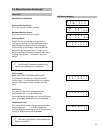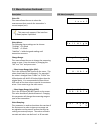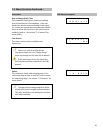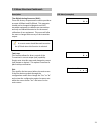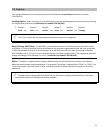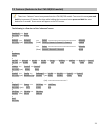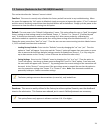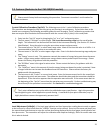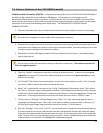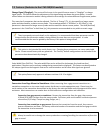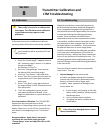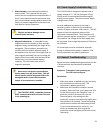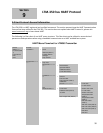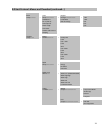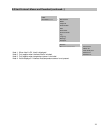
7.2 Features (Exclusive to the LTM-250/350 models)
Field Reversible Transmitter (FlipPrb): An important and key feature of the LTM-250 and LTM-350 Models is
the ability to flip (rotate) the entire transmitter 180 degrees. This procedure is only for gage mount
transmitters with an elbow connection on them. If the transmitter does not have an elbow connection please
contact factory for assistance. If the need arises and a bottom mount transmitter is preferred over a top mount
transmitter or vice versa then following these simple steps. THIS PROCEDURE IS FOR GAGE MOUNT
TRANSMITTERS ONLY.
1. Physically flip (rotate) the entire transmitter (this includes the sensor probe) and mount it accordingly.
Be careful not to damage the sensor probe while rotating the transmitter.
2. Remove the front glass cover of the transmitter enclosure and then using needle nose pliers pull on the
protection screws (snake-eye screws) to pull out the electronics module. Alternate pulling on the screws
in order to prevent damage to the electronics module.
3. Rotate the electronics 180 degrees module and insert it back into the enclosure. The module should
now be right side up.
Do not twist or rotate the transmitter housing to adjust the conduit entry. The conduit entry must be
left in the opposite position.
4. There is a “special” configuration menu that is utilized to achieve this task. To access this menu press
and hold
the increment (↑) button then while holding the increment button press and hold the enter
button for 3 seconds.
5. The “FlipPrb?” (Flip Probe) menu should appear. Use the up or down buttons to select “Yes” if rotating
the sensor is what is desired else select no and exit the menu.
6. When “Yes” is selected the next menu is the “Config” (Configuration/Orientation) menu. This is where
the “Top” or “Bottom” mount configuration is selected. This configuration/orientation is with reference
to where the sensor probe “bulkhead” is located on top or bottom. Select the appropriate “Config” and
press enter. If the original orientation is selection the menu will revert back to “FlipPrb?” menu.
7. The next menu is “Rerange?” (Change Range) menu. Select “Yes” if the measuring range (or span) is
changing from the original span. Select “No” if the span is to able to remain the same. Selecting “Yes”
will then go through change range procedure discussed in section 7.1 of this manual.
8. After the “Rerange?” menu is the “CrntLvl?” (current level) menu. Simply enter where the existing level
is in the vessel and a one-point calibration will take place automatically and the next menu will appear.
If the next menu appears then the operation was successful. If the menu reverts back to the beginning
of the “FlipPrb” menu then the operation was unsuccessful. Further troubleshooting may be necessary
if the operation is unsuccessful. See
Section 8 for troubleshooting guide.
26




